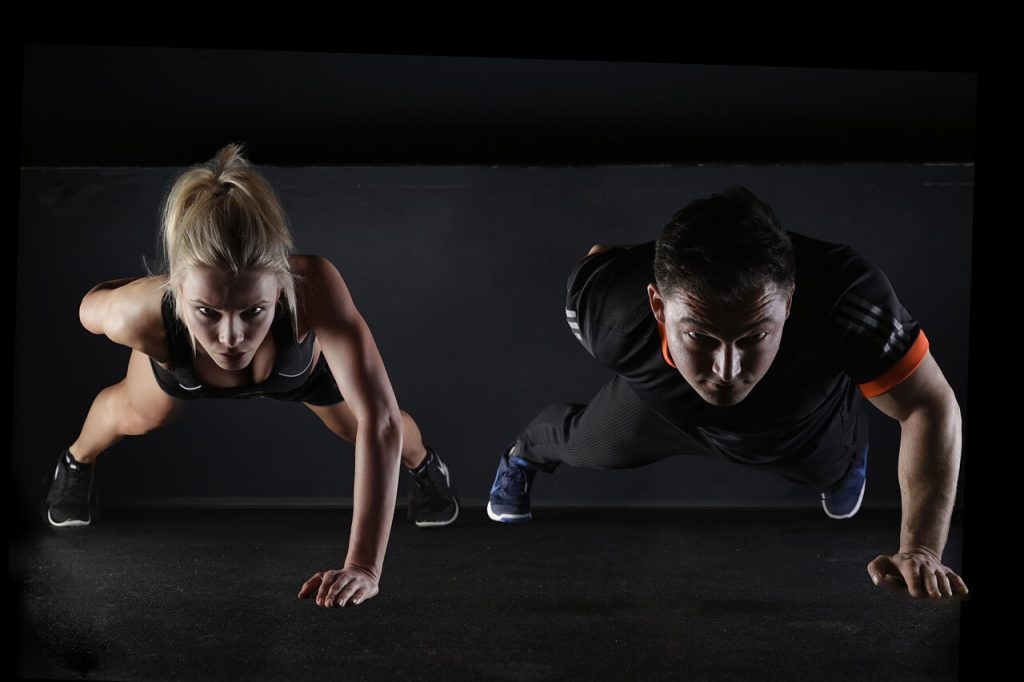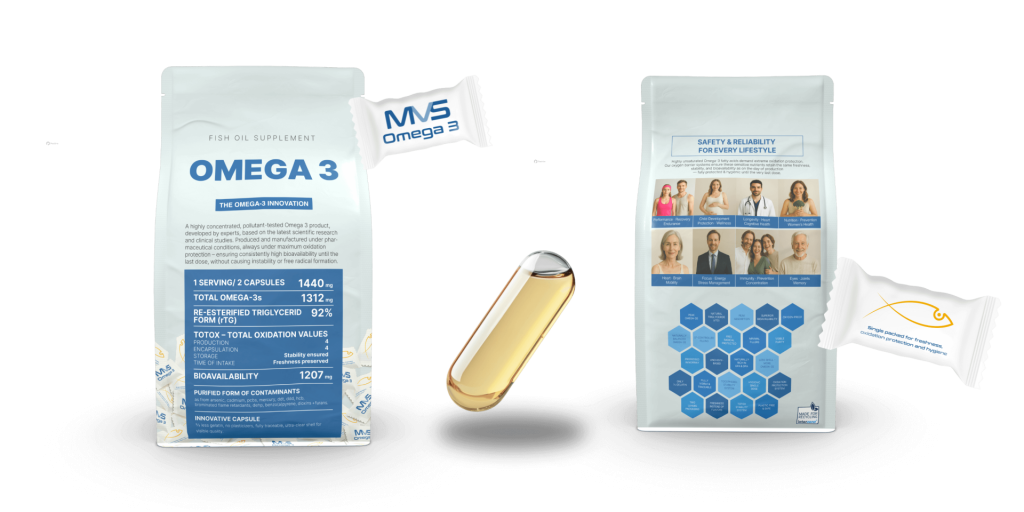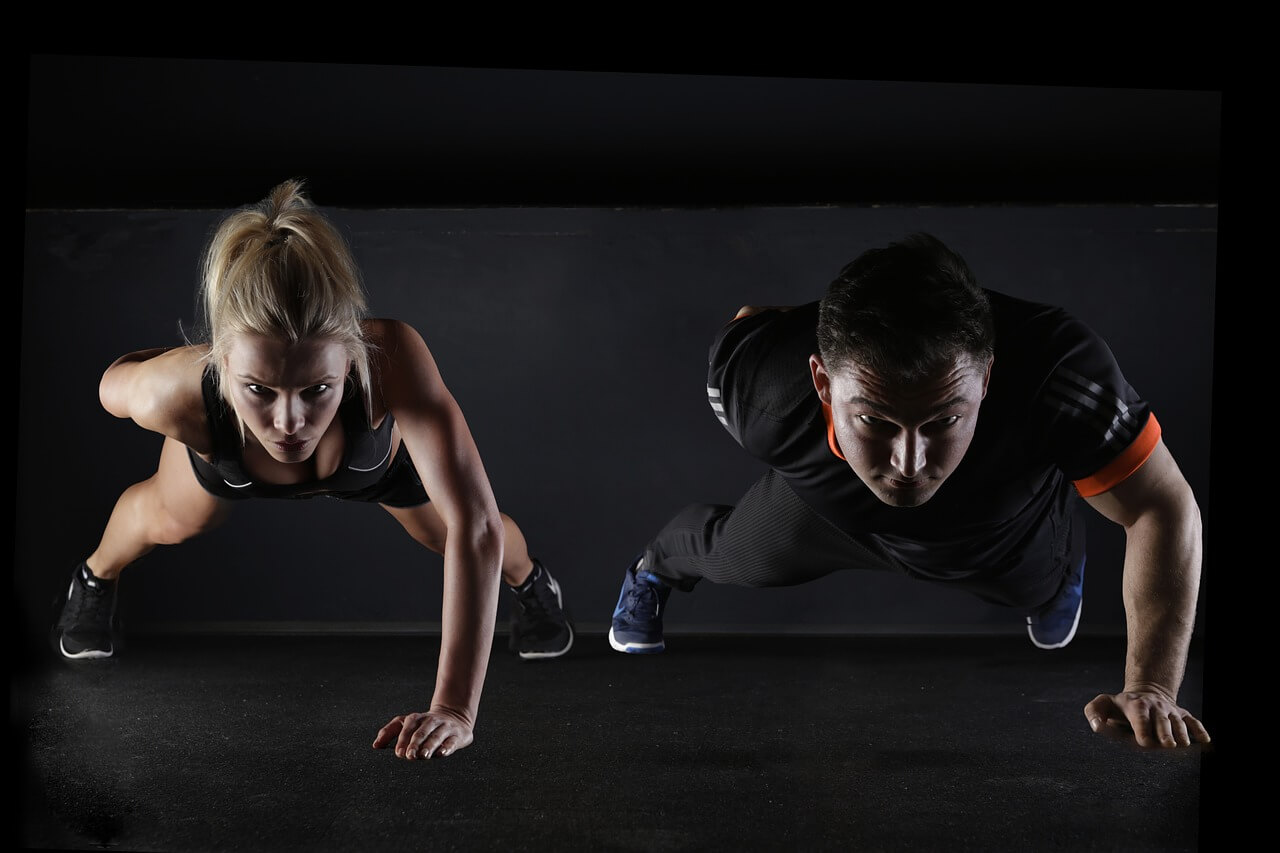Fitness isn’t just about training hard — it’s about how well your body adapts, recovers, and grows stronger. Omega-3 fatty acids, particularly EPA and DHA, play a crucial role in this process. From muscle recovery and joint health to cardiovascular endurance, fat metabolism, and cognitive focus, Omega-3s have become a key supplement for athletes and active individuals.
In 2025, new research confirms what fitness enthusiasts have long suspected: Omega-3s don’t just support general health — they directly enhance performance, resilience, and recovery.
1. Fighting Inflammation & Accelerating Recovery
- Exercise creates microtears in muscle fibers → necessary for growth but often accompanied by soreness.
- Omega-3s reduce exercise-induced inflammation by generating specialized pro-resolving mediators (SPMs).
- Studies (2022–2024): Athletes supplementing with 2–3 g/day EPA+DHA had less muscle soreness, faster recovery, and better training continuity.
Fitness benefit: Train more often, recover faster, reduce downtime.
2. Joint Protection & Mobility
- Repetitive lifting and high-impact exercise strain joints.
- Omega-3s improve synovial fluid quality and reduce stiffness.
- Meta-analysis (2023): Omega-3 supplementation significantly reduced joint pain and improved flexibility in athletes with chronic training loads.
Fitness benefit: Healthier joints, fewer injuries, and long-term training resilience.
3. Muscle Growth & Protein Synthesis
- Omega-3s enhance muscle protein synthesis (MPS) — the key process behind muscle growth.
- They activate mTOR signaling, increasing amino acid uptake into muscle cells.
- Clinical data (2021–2024): Supplementing with 3–4 g/day Omega-3s improved lean muscle gains when combined with resistance training.
Fitness benefit: More efficient gains from every workout.
4. Cardiovascular Endurance
- Omega-3s improve blood flow, oxygen delivery, and heart efficiency.
- They lower resting heart rate and improve endothelial function.
- Endurance athletes (2023 trials): Those supplementing with Omega-3s showed improved VO₂ max and reduced heart strain during high-intensity sessions.
Fitness benefit: Stronger cardiovascular foundation for running, cycling, and HIIT.
5. Fat Metabolism & Body Composition
- Omega-3s influence PPAR activation, shifting metabolism toward fat oxidation.
- Promote conversion of white fat into more metabolically active “beige” fat.
- Studies (2022–2025): Omega-3 supplementation improved fat loss outcomes, particularly when combined with calorie control and training.
Fitness benefit: Support fat shredding while preserving lean muscle.
6. Cognitive Performance & Focus
- Fitness is as much mental as physical.
- DHA maintains neuronal membranes, while EPA regulates neurotransmitters and mood.
- Omega-3s enhance reaction time, focus, and mind-muscle connection.
Fitness benefit: Sharper focus, better technique, fewer distractions in training.
7. Oxidative Stress Protection
- Intense training generates free radicals that damage cells.
- Omega-3s increase antioxidant capacity and improve mitochondrial efficiency.
- Result: Less oxidative damage, better cellular recovery.
Fitness benefit: Longer performance longevity and reduced overtraining stress.

How Much Omega-3 Daily For Fitness Enthusiasts?
To harness the full spectrum of benefits omega-3 fatty acids offer for fitness enthusiasts, a daily intake tailored to your goals and lifestyle is key. Striking the right balance ensures your body thrives and performs at its peak. Here’s your personalized guide to omega-3 intake:
- 1. Maintenance Dose: For general health and well-being, a daily dose of 250–500 milligrams of combined EPA and DHA is a solid foundation. This maintains a baseline of omega-3s to support overall cardiovascular health, joint function, and immune system resilience.
- 2. Active Lifestyle Boost: If you’re actively engaged in regular workouts or physical activities, consider elevating your omega-3 intake. Aim for a range of 500-1,000 milligrams of combined EPA and DHA per day. This increased dosage aids in managing exercise-induced inflammation, optimizing muscle function, and supporting faster recovery.
- 3. Performance Enhancement: For fitness enthusiasts striving for peak performance and endurance, a more robust omega-3 regimen becomes pivotal. Aim for 1,000 milligrams or more of combined EPA and DHA daily. This higher dosage is associated with enhanced nerve conduction, improved neuromuscular engagement, and better resilience against the strains of intense training.
- 4. Consultation with a Professional: Individual responses to omega-3 intake can vary. Before making significant adjustments, it’s prudent to consult with a healthcare or nutrition professional. They can assess your specific needs, considering factors like your fitness goals, dietary habits, and any existing health conditions.
Pro tip: Always take Omega-3 with meals containing fat to maximize absorption.
Quality Matters: Why Freshness & Form Define Results
When it comes to Omega-3s, it’s not just how much you take that matters — it’s the form, freshness, and packaging that define whether your supplement actually delivers results.
Form: Why rTG > EE for Superior Absorption
Most Omega-3 supplements are sold in either ethyl ester (EE) form or re-esterified triglyceride (rTG) form.
- Ethyl ester (EE): Created during processing, cheaper to manufacture, but poorly absorbed by the body — especially if taken without fat. Much of the Omega-3 content simply passes through unused.
- Re-esterified triglyceride (rTG): Closest to the natural form found in fish. Clinical studies show 20–70% higher bioavailability, meaning more EPA and DHA are actually absorbed into blood, muscle, and joint tissue.
For athletes, this difference matters: higher absorption/better bioavailability means better recovery, improved endurance, and more efficient muscle growth from the same capsule.
Oxidation: Why Freshness Is Non-Negotiable
Omega-3 fatty acids are among the most delicate nutrients. When exposed to oxygen, heat, or light, they oxidize and turn rancid.
- Problem: Oxidized oils lose their anti-inflammatory effects and may actually increase inflammation — the opposite of what athletes need after training.
- Signs: Fishy burps, unpleasant smell, or cloudy capsules.
- Solution: Only fresh, low-TOTOX-value oils deliver reliable performance benefits.
Athletes who unknowingly take oxidized oils may not just be wasting money — they may be slowing recovery and adding extra oxidative stress.
Packaging: Gold Standard Protection
Even the best oil loses quality if stored poorly. That’s why packaging is as important as formulation.
- Bulk bottles → Every time you open them, all capsules are exposed to oxygen.
- Blister packs → Protect each capsule individually.
- Gold standard (2025- only with MVS Omega-3): Individually sealed capsules inside oxygen-barrier pouches. This ensures maximum stability, freshness, and potency until the last capsule.
For athletes who travel, train outdoors, or need reliability, this packaging guarantees consistency from first dose to last.
In summary
- Form: rTG (re-esterified triglyceride) > EE (ethyl ester) for superior absorption.
- Oxidation: Rancid oils lose effectiveness and may worsen inflammation.
- Packaging: Individually sealed capsules + oxygen-barrier pouch = gold standard.
MVS Omega-3’s Advantage For Fitness Enthusiasts
At MVS Pharma, we’ve engineered an innovative and superior Omega-3 supplement, specifically for performance-driven lifestyles. Every design choice is made with athletes and active individuals in mind.
- Re-esterified triglyceride (rTG) form: Provides the highest absorption, ensuring EPA and DHA reach muscle tissue, joints, and the cardiovascular system where they can actively support recovery and endurance.
- Freshness maintained from first capsule to last — proven by strict TOTOX control.
- Double-protection packaging: Each capsule is individually sealed and then stored inside an oxygen-barrier pouch. This design prevents air, light, and humidity from compromising freshness. Athletes can carry their supplements anywhere — gym bag, outdoor training, or travel — with total confidence of getting fresh and preserved omega-3 fatty acids.
- German GMP & ISO-certified production: Every batch is produced with pharmaceutical-grade-like care and upholds the highest standards in Germany. This ensures purity, safety, and consistency, meaning athletes can trust they’re fueling their bodies with uncompromised quality.
- Highest purity → Our omega-3 oil is manufactured in accordance with strict standards and with pharmaceutical-grade-like care, purified using a sophisticated process.

Disclaimer: As a service to our readers, MVS Pharma GmbH publishing provides access to our library of archived content in our blog. Please note the date of the last review or update on all articles. No content on this site should ever be used as a substitute for direct medical advice from your doctor or other qualified clinician.
FAQs
How does Omega-3 help with muscle recovery?
How does Omega-3 help with muscle recovery?
By reducing inflammation and accelerating healing via SPMs.
Can Omega-3 help build muscle?
Can Omega-3 help build muscle?
Yes. It improves protein synthesis and lean muscle gains when paired with training.
How much Omega-3 should athletes take?
How much Omega-3 should athletes take?
1000–3000 mg EPA+DHA/day depending on training intensity.
Can Omega-3 improve endurance?
Can Omega-3 improve endurance?
Yes. It enhances oxygen delivery and heart efficiency, boosting VO₂ max.
Does Omega-3 help with fat loss?
Does Omega-3 help with fat loss?
It shifts metabolism toward fat burning and helps preserve muscle during calorie deficits.
Why does Omega-3 quality matter for athletes?
Why does Omega-3 quality matter for athletes?
Oxidized or poorly absorbed oils won’t deliver benefits and may harm recovery.
What’s the best Omega-3 form for fitness?
What’s the best Omega-3 form for fitness?
rTG form is the best form of omega-3 fatty acids, with the highest rate of absorption in the human body.
Is Omega-3 safe to combine with protein or creatine?
Is Omega-3 safe to combine with protein or creatine?
Yes. In fact, they complement each other for muscle growth and recovery.
Sources:
- National Library of Medicine document – “Omega-3 Polyunsaturated Fatty Acids: Benefits and Endpoints in Sport”
- National Library of Medicine document – “The Influence of Omega-3 Fatty Acids on Skeletal Muscle Protein Turnover in Health, Disuse, and Disease”
- National library of medicine – “Effects of Omega-3 Fatty Acid Supplementation on Skeletal Muscle Mass and Strength in Adults: A Systematic Review”


